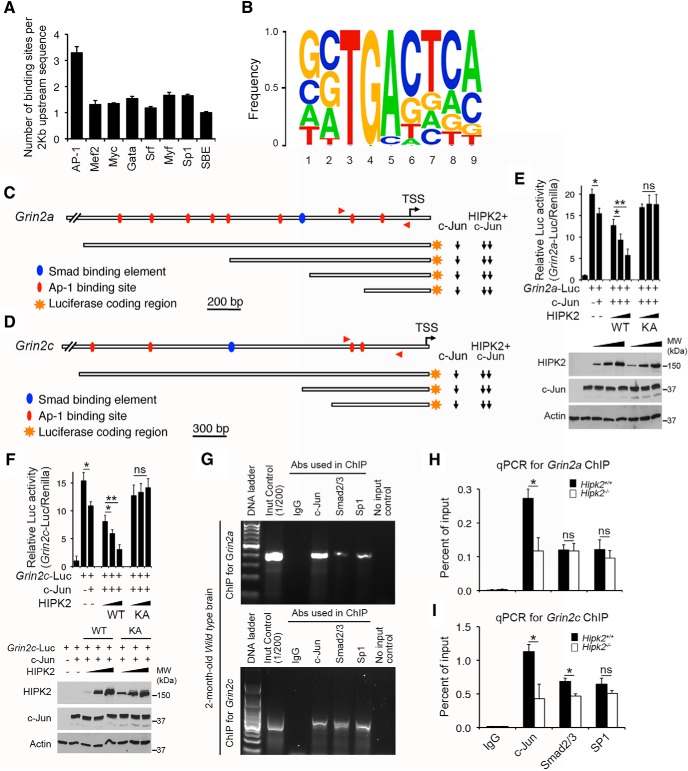Figure 2.
Characterizations of HIPK2 as a transcriptional repressor of c-Jun in the transcriptional control of mouse Grin2a and Grin2c genes. A, B, Compared with the DNA binding motifs for other transcription factors, the AP-1 binding motif was overrepresented and showed a highly conserved binding core sequence, in the 2 kb promoter/enhancer sequences of HIPK2 target genes. C, D, Luciferase activities of both Grin2a-Luc and Grin2c-Luc were suppressed by c-Jun, and the transcriptional suppressor activity of c-Jun in Grin2a-Luc and Grin2c-Luc reporters can be further enhanced by the addition of HIPK2 (Figure 2-1. E, F, Western blot showed the expression of the exogenous HIPK2 and c-Jun constructs, and the endogenous actin protein level. The results showed that HIPK2 kinase dead mutant, HIPK2K221A, was unable to promote the c-Jun-mediated suppression, indicating that the kinase is required for its cosuppressor function. G–I, ChIP assays showed that the endogenous c-Jun was bound to the AP-1 motif in the promoters of Grin2a and Grin2c in 2-month-old Hipk2+/+ mouse brain. In contrast, the same promoter regions in Grin2a and Grin2c showed much lower binding of transcription factors Smad2/3 and SP-1. Loss of HIPK2 decreased the binding between c-Jun and the conserved AP-1 binding motif in the promoter/enhancer sequences of Grin2a and Grin2c. Data are mean ± SEM from at least three independent experiments. *p < 0.05 (ANOVA). **p < 0.01 (ANOVA). Not significant: p > 0.05.

